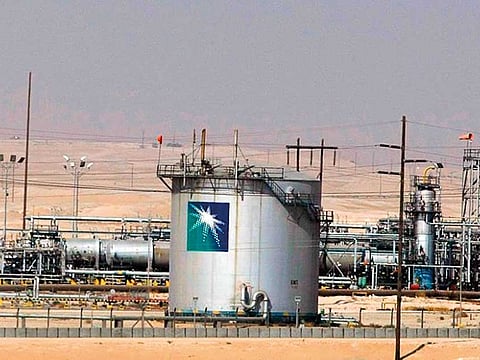Saudi fiscal situation improving amid spending curbs, subsidy reforms
Fiscal deficit target of 7.8% of the GDP looks achievable this year with analysts seeing non-oil revenue picking up from 2018

Dubai: Curbs on spending and improved oil revenues have supported Saudi Arabia’s government finances in the first half of 2017, with clear indications of government achieving budget deficit targets.
While the fiscal situation is on the mend, there has been talk of an impending revision of the National Transformation Plan (NTP) focused on the diversification of the economy.
A recent Financial Times (FT) report suggested that Saudi Arabia is working to redraft the NTP, and a final draft would be presented in October. Although there has been no official confirmation on the revision of NTP, analysts agree that the country fiscal reforms are gradually gaining traction and the diversification agenda may require longer deadline than originally envisaged.
Spending discipline and higher oil revenues are helping the country improve the fiscal picture. The second quarter 2017 fiscal deficit stood at 46.5 billion Saudi riyals ($12.5 billion; Dh45.51 billion), with the first half deficit standing at 73 billion riyals annualising it at 145 billion riyals.
The financing for the budget deficit was taken from the government’s reserves account at Saudi Arabian Monetary Agency (15 billion riyals) as well as external borrowing (international sukuk of 33.7 billion riyals).
“The fiscal deficit target of the authorities [198 billion riyals] 7.8 per cent of GDP could be within reach for 2017 at the current pace excluding any off-budget spending and seasonality. This is well below our expectations of 326 billion riyals or 12.8 per cent of GDP and last year’s out-turn of 416 billion riyals, 17.2 per cent of GDP,” said Jean-Michel Saliba, Mena economist at Bank of America Merrill Lynch.
Economists say there has been significant progress in implementing the Fiscal Balance Programme, reining in capital spending and gradually phasing out subsidies.
“Fuel prices, and electricity and water tariffs have increased significantly in the past two years, yielding savings equivalent to 2 per cent of GDP. This has allowed higher transfers from the state oil company to the budget. The deficit is expected to narrow from about 17 per cent of GDP in 2016 to 10 per cent of GDP in 2017 and 1 per cent by 2020,” said Garbis Iradian, Mena chief economist at the Institute of International Finance (IIF).
The increase in fiscal oil revenues in the first half of 2017 was higher by about 70 per cent, largely due to a mix of higher oil prices and a higher payout ratio from Saudi Aramco.
Going forward analysts expect to see a gradual but steady increase in non-oil revenues starting from 2018 onwards as fiscal reforms kick in. In the first half of this year non-oil revenues stood at about 45 per cent of the budget target. In the meantime, the excise tax on soft drinks, tobacco and energy drinks, as well as the fee on dependents of expatriate workers could add in 7.5 billion riyals of non-oil revenues in the second half of 2017.
The introduction of VAT, the introduction of an expatriate worker levy, the possible introduction of tariffs on luxury products and the increase in fees on dependents of expatriate workers could add 80 billion riyals or 3 per cent of GDP to non-oil revenues in 2018.
While the kingdom has achieved significant strides in spending discipline, largely with cutbacks on in infrastructure and transportation, military, security and regional administration stood at a combined 44 per cent of budgeted spending. Compared to the targeted budget spending of 890 billion riyals, spending stood at only 381 billion riyals (43 per cent of target) at the end of the first half of 2017.
Analysts say the spending discipline may be tested in the second half of the year due to seasonality as well as the reversal of public sector allowance cuts on a retroactive basis (about 7 billion riyals). The reintroduction of the public sector allowances (7 billion riyals) and the introduction of military personnel one-off bonus (4 billion riyals) in April 2017 should have started to be included in the data for the second quarter of 2017.
The introduction of the Household Allowance Programme (at a cost of 25 billion riyals), as well as linkage of gasoline and diesel to reference prices (with potential revenue of 22 billion) appears to have been both delayed.
Sign up for the Daily Briefing
Get the latest news and updates straight to your inbox



